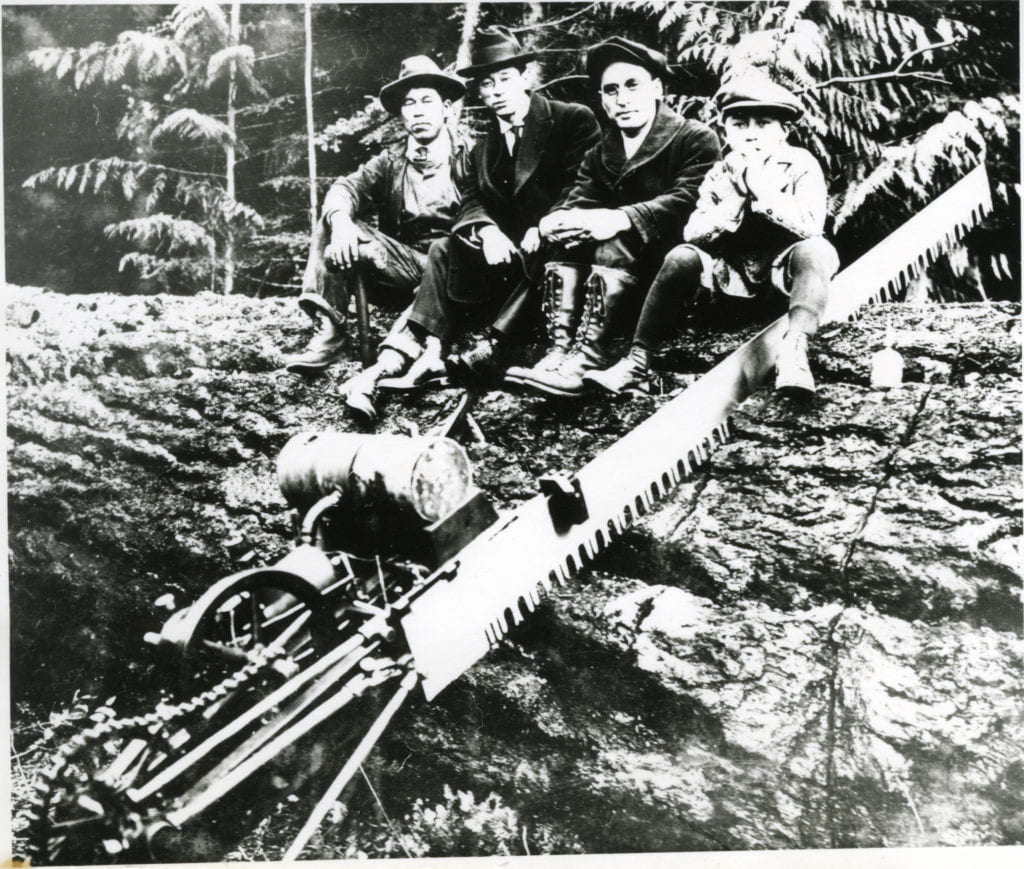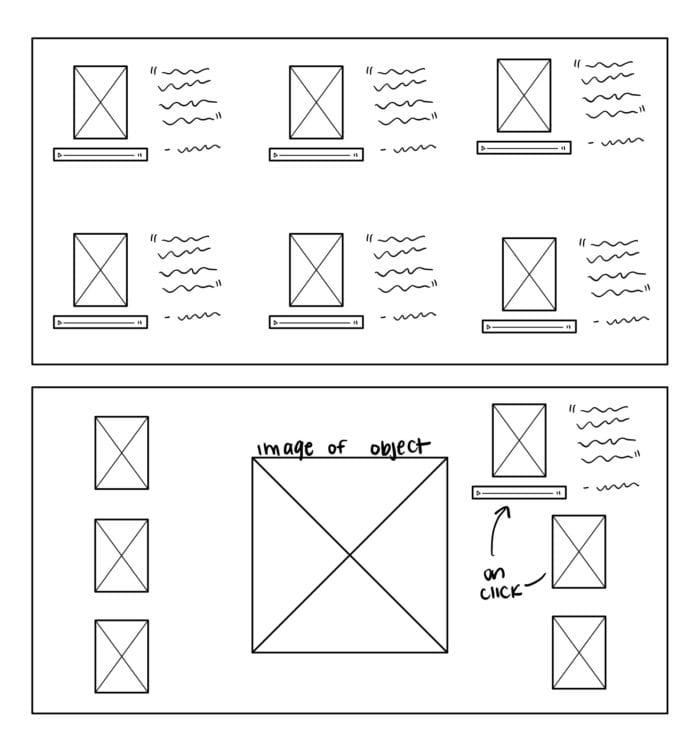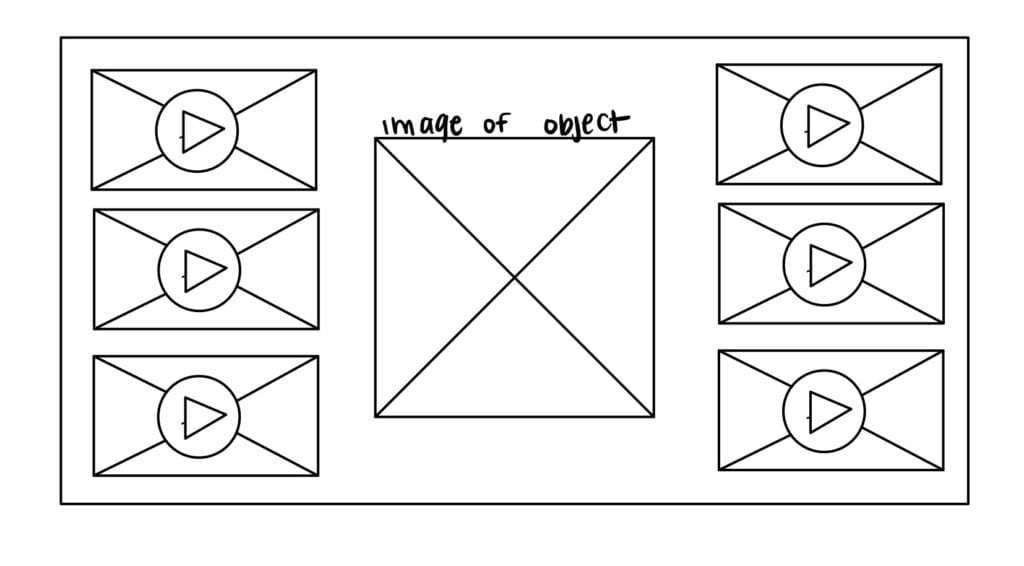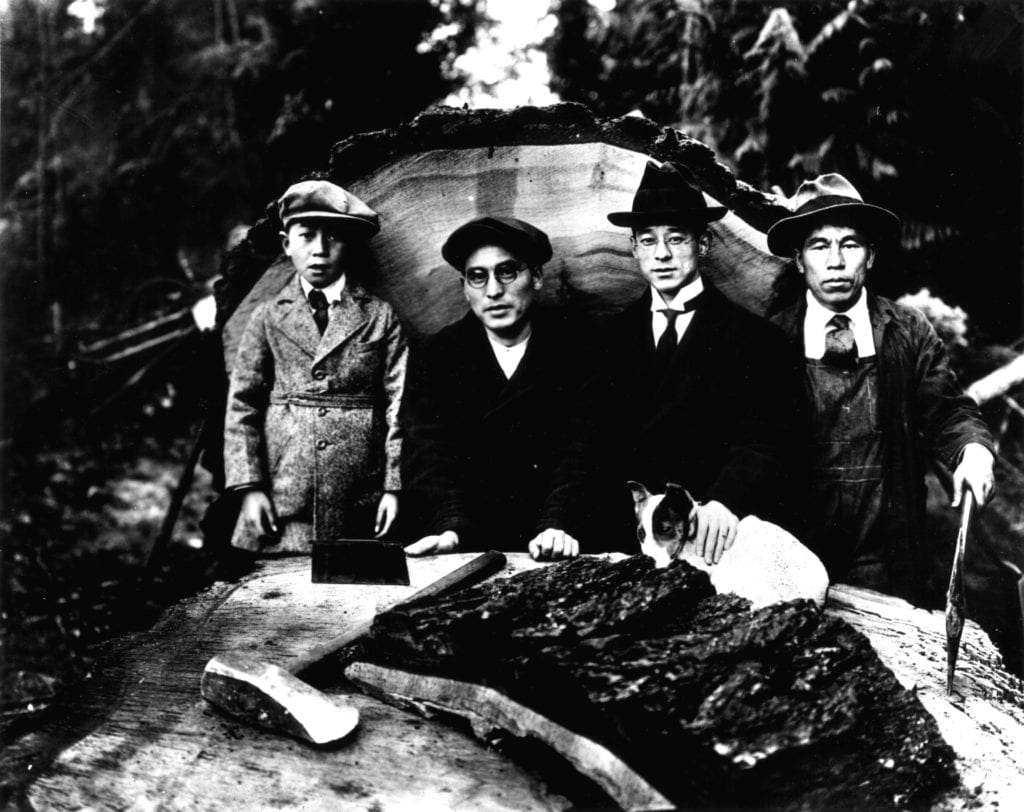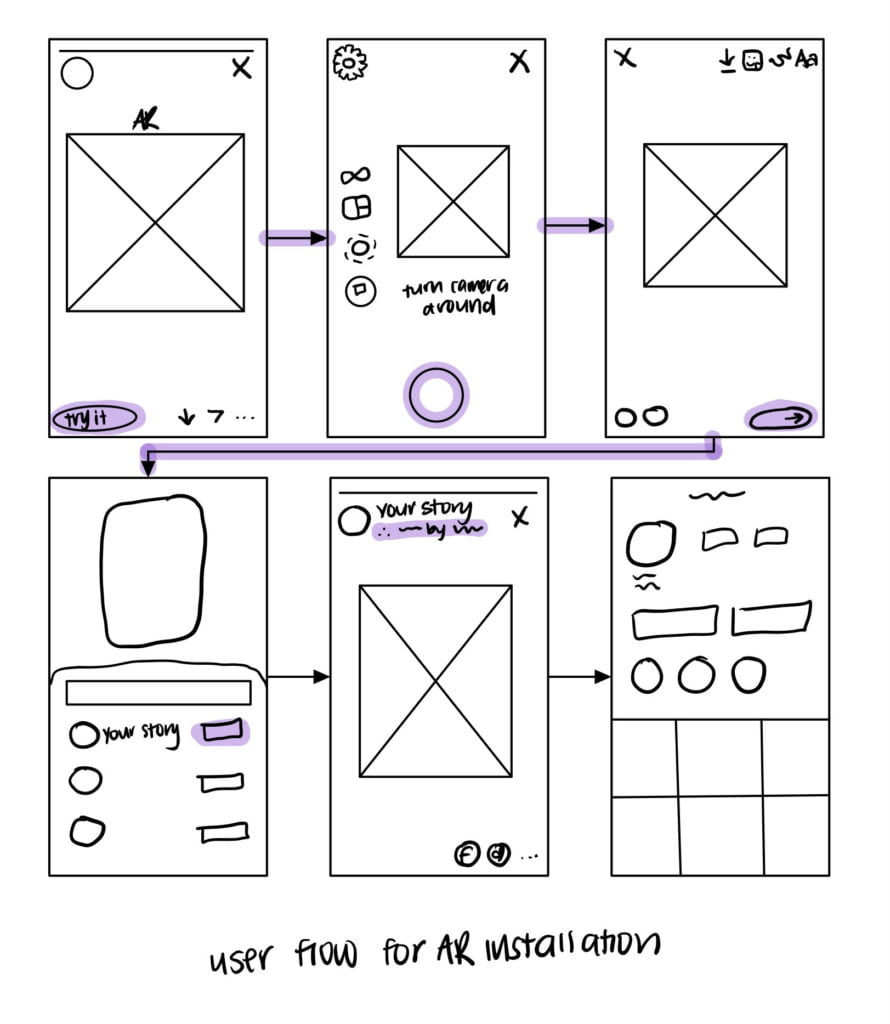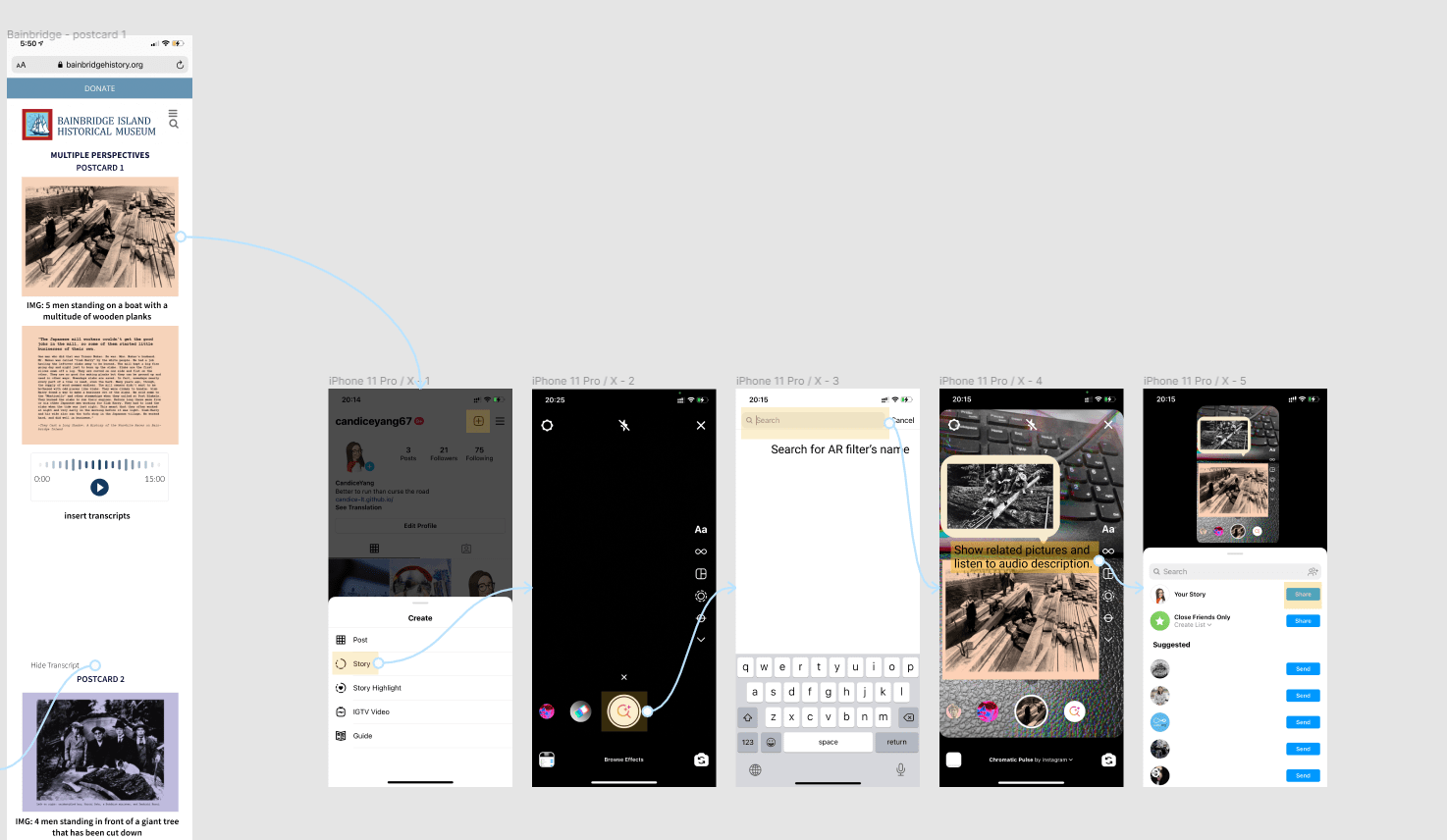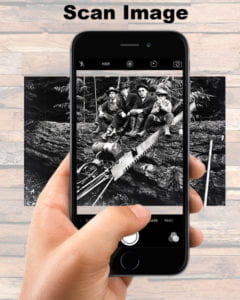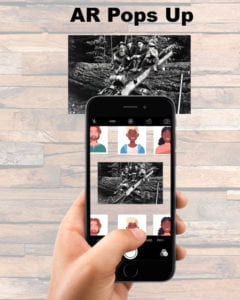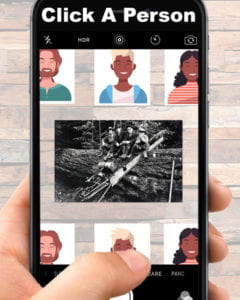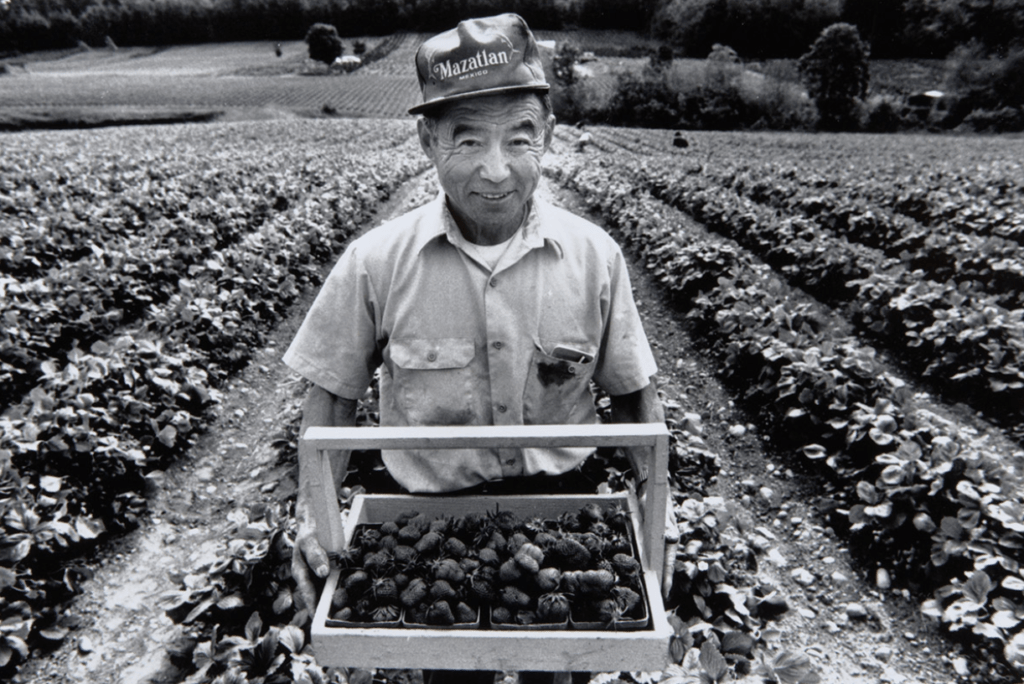On this page:
Exhibit Description
This section is organized into four panels (Saw, Logging, Strawberry, Canning) with touch and smell objects to tell the stories of the people and history of Bainbridge Island. They can be visited in any order.
All touch and smell objects are located on a slanted shelf directly below the QR Code on each panel. Above this shelf, next to the QR code are mounted and laminated photos of student work. All associated text, images, and image descriptions are available on the exhibit’s site. See below for an overview of the touch and smell objects in this exhibit.
Saw Panel
Touching the raised lines of the images, compare the sizes of the person to the cut log and the saw used. The horizontal raised line is the top of the felled log which that person is sitting on top up.
Logging Panel
Moving counterclockwise, the next panel’s tactile compares the size of a man to the width of a cut log. Logging Touch Objects Located to the right of the tactile, are two items.
Logging Smell Objects
The top item is a box containing the scent of cedar. To access, spin the circular cover located on the face of the box.
Logging Touch Objects
Directly below the scent box is a slice of a cedar tree.
Cannery Panel
Continuing counterclockwise, the next panel’s tactile features an image of a strawberry cannery. The raised lines height light the shape of the sorting tables and convey belt. There are several female workers highlighted as well as a large wood barrel.
Strawberry Panel
Continuing counterclockwise, the final panel’s tactile features the outline of a strawberry farmer standing within his field. The diagonal lines denote the rows of strawberries he has planted. Located to the right of the tactile, is a box containing the scent of strawberries. To access, spin the circular cover located on the face of the box.
The Challenge
History is dynamic, and museums increasingly recognize the importance of including many voices, especially those previously excluded from the historical record. Multiple perspectives can provide visitors with new insights and offer an emotional or personal connection with historical events. Bainbridge has a very small staff, a challenge faced by many historic site and house museums. However sites need to be able to incorporate these stories in ways that are nimble, affordable and accessible.
The Opportunity
Bainbridge Island Historical Society in Washington provided a test case for the students to develop tools to enable multiple perspectives to be featured. This allows different communities to make a deeper connection to a particular object, artifact, image or story. Accessible technologies would need to be designed into the experience to enable the most people possible to connect with the display.
The Solution
Acknowledging the limited staff at historic site museums, the team created accessible website templates that staff could easily update with new content. The historic sites can focus on identifying and collecting missing stories without feeling overwhelmed by the technology. By including more perspectives into an accessible plat form, the museum will provide new ways for visitors to engage with its history.
Saw Panel
Black and white portrait of 3 men and a boy sitting on a large felled log with saw in place under boy’s leg; men wear boots, caps or hats; location as Island Center and individuals as Mr. Harui and friends.
Logging Panel
In the early 20th century, many Japanese were drawn to Bainbridge Island with the promise of careers in logging. They established tight knit communities that contributed to the island’s economic and cultural life.
Cannery Panel
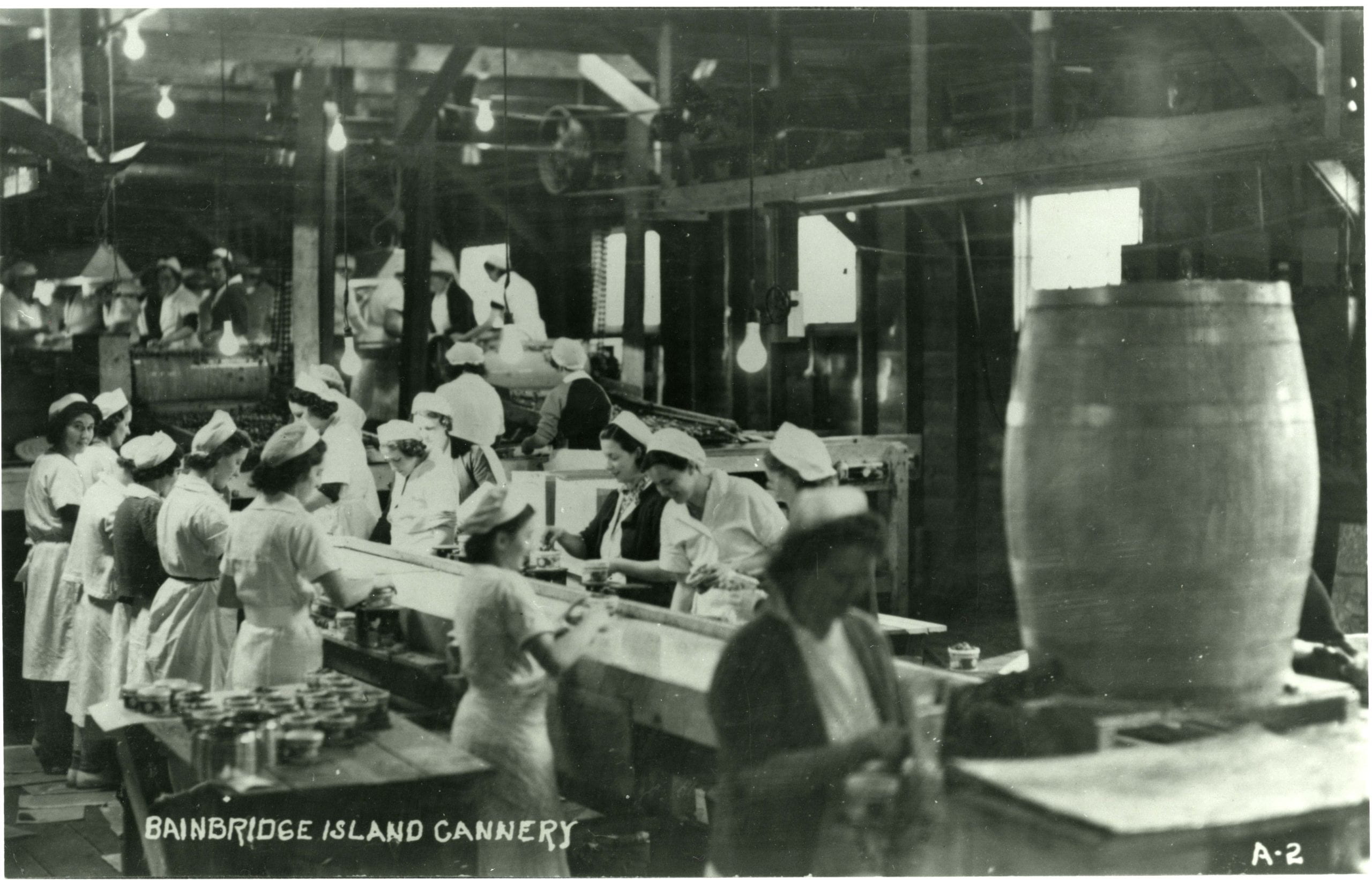 Interior of strawberry cannery built on piers over Eagle Harbor at the end of Weaver Road, Bainbridge Island. Large wood barrel is in foreground; in background women workers dressed in white stand at a table sorting strawberries; wood beamed ceiling and walls are visible, as are bare light bulbs that serve as lighting.
Interior of strawberry cannery built on piers over Eagle Harbor at the end of Weaver Road, Bainbridge Island. Large wood barrel is in foreground; in background women workers dressed in white stand at a table sorting strawberries; wood beamed ceiling and walls are visible, as are bare light bulbs that serve as lighting.
Strawberry Panel
The only type of strawberry grown on Bainbridge Island was the Marshall Strawberry. Akio Suyematsu is the lone Bainbridge Nikkei (Japanese emigrants and their descendants) who farmed into the twenty-first century. From horse and plow , to tractor and organic farming, Akio has adapted his techniques while remaining faithful to the bountiful land he loves.
Give Feedback
